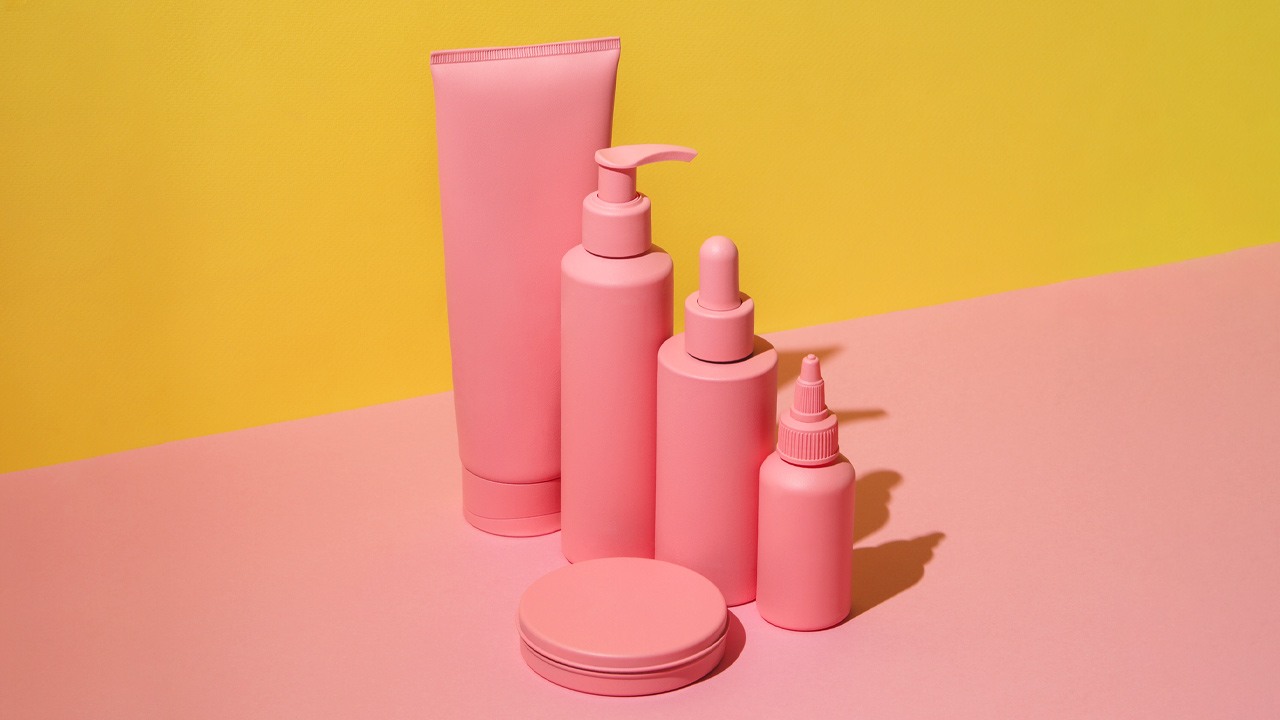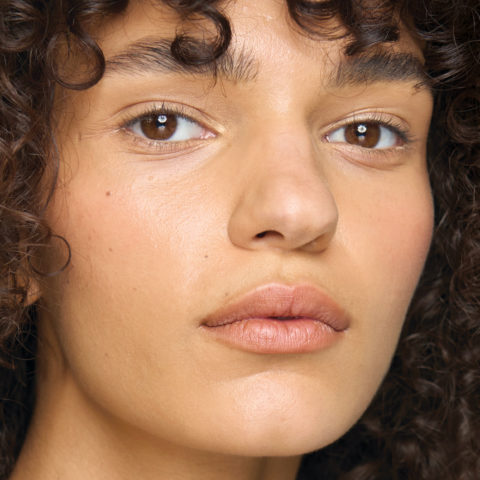How to Recycle Your Makeup Containers
Plus more ways to reduce beauty waste

Climate change is hard to deny when we see how much change has happened in the time we’ve been practicing social distancing due to the COVID-19 pandemic. Last month, the carbon dioxide levels in New York City were 50% lower than they were in March 2019. Environmentalists are also tracking the air pollution above Wuhan province in China; it went down significantly for two months while everyone was in isolation and is now creeping back up.
While we wrestle with these challenging times, many are starting to see what the human impact on our planet really looks like.
You’ve likely heard the statistic that less than 11% of plastic is actually recycled properly in Canada. But did you also know that every year in the U.S.A., according to the Environmental Protection Agency, over two billion razors and refill blades are sent to landfill? Even worse, that stat is actually from a 1988 report, and that number has likely gone up exponentially since then. If you do math and consider that we have similar spending habits to our neighbours to the south, Canada has about 10% the amount of people as the U.S., so it would track that we throw away about 200 million disposable razors each year, at minimum.
The above data notwithstanding, Canadian stats on how much plastic waste actually comes from the beauty and self-care sector are very elusive. Unless brands release their numbers on products sold, it’s hard to estimate the actual amount of plastic that ends up in landfills. Nonetheless, it’s safe to assume a lot of plastic gets thrown out because of our Sephora sprees.
So what does all the doom and gloom have to do with you and your beauty and personal care habits? Well, there are a few ways to make sure that you’re doing the most you can when it comes to not adding to our already massive recycling problem. “One of the best ways to make sure that change happens is to make the companies understand that you really care about this issue,” says Vito Buonsante, plastics program manager at Environmental Defence Canada. “People can only do so much. It’s not really their responsibility to control the waste; it’s more on the company.”
Buonsante recommends that we take a look at what we’re purchasing and start giving our money to brands that offer recycling programs or that use more easily recycled materials, like glass and tin, as opposed to plastic. If it’s absolutely necessary to buy plastic, check that the container has a 1 or 2 plastic rating, which can be found on bottles inside the recycle symbol. Those numbers are the most desirable for recycling programs (the system ranks up to a 7). “The problem with packaging in the beauty industry is that it is often made of mixed materials, therefore it becomes pretty difficult to recycle,” says Buonsante. In short, try not to buy cosmetic products with a plastic rating of 3 or higher.
Strongly expressing your environmental concerns to your member of parliament and local city councillor is also helpful, says Buonsante, as is signing plastics-focused petitions and supporting environmental charities (like the Canadian Parks and Wilderness Society, Ecotrust Canada or any local conservancy groups) so they can continue to help push things forward.
And now, while we’re taking social distancing measures very seriously, perhaps we can also help curb our plastic waste anxiety (because really, we don’t need another thing to fret about) by looking into the following ways to make our beauty routine a little more environmentally friendly.
Here are four of the best ways to reduce your beauty waste.
1. Recycle empties in-house, get free products
First off, as Buonsante mentioned, think about the brands you invest your hard-earned money in. One way to do that is by choosing brands that already have an in-house recycling program.
The Back to M.A.C program has been around since the early 1990s, making them a true recycling pioneer. The Canadian-founded brand will take back six primary packaging containers (they have a system where you can bring in any containers during your next purchase, and they’ll track how many you have instead of you having to collect them!) in exchange for a lipstick, lipgloss or single eyeshadow.
If you’re a big Creme de Corps fan, you will receive one stamp for each full-sized empty bottle of the body cream that you bring back to a Kiehl’s location to be recycled. Once you have collected ten stamps, you’ll get any travel-sized product that your beauty-loving heart desires.
Over at Lush, when you bring back five of the classic black containers, you can receive one of 16 fresh face masks from the brand.
2. Then take your recycling game to the next level with TerraCycle
Look to recycling programs like TerraCycle to help reduce your environmental impact; when you purchase a waste box from the company, simply fill it up with items that your local municipality will not take, and TerraCycle will refurbish, recycle or upcycle each item. The team at TerraCycle will take almost anything that is difficult to recycle—they have even found a way to recycle cigarette butts! Plastic containers become park benches, picnic tables, playgrounds, and so much more. Most municipalities have different rules on recycling (please note yours before you throw away your plastics), so for anything that won’t be picked up curb-side, this program is a great solution.
If the TerraCycle boxes are too pricey (they start at $54, including shipping) some brands and stores are partnering with the program to help clients be mindful of their waste without incurring the cost. These include The Detox Market (all three Toronto locations will take any type of beauty waste) and Pure + Simple (the Ontario-based shop will take back all their empties to be recycled).
Big brands like Burt’s Bees, L’Oréal, Weleda, Gillette and L’Occitane have a partnership with TerraCycle where you can send back your empties for recycling (check their website for how to ship back bottles). And, perhaps it’s time to make more use out of these recycling options—Buonsante notes that most people are not aware that they exist—especially considering that most shops are still closed for the foreseeable future.
3. Try refillable beauty products
A big trend in the beauty and personal care space is brands offering products in refillable packaging. “When it comes to reusable containers that can be sent back, the products are likely a bit more expensive,” notes Buonsante. But with time, hopefully the prices will even out. “That is where we hope the market will continue to go.”
Back in early 2019, TerraCycle’s founder announced a pilot project called Loop. Major brand’s signed onto the program, which launched in NYC and Paris. Now, Loblaws is looking to launch a Loop pilot project in Canada this summer. So what exactly is Loop? Essentially, brands have started putting their products into reusable and recyclable tin containers. This has allowed brands to be a touch more design-focused in their new labeling (most brands have pared down their logos for this project), while consumers can use the product and send the tins back, where they will either be cleaned and reused, or, if they’re too weathered, they will be recycled.
In the meantime, for the makeup and skincare obsessives, look to companies like Kjaer Weis (the luxe Scandinavian eco-brand’s packaging is quite gorgeous), Elate cosmetics (this Canadian brand uses beautiful bamboo as their outer packaging, offering refillables for everything in their lineup!), Clove and Hallow (the west coast cosmetics brand offers refillable compacts!) and Cocoon Apothecary (a Toronto brand who will take back bottles, sanitize them and reuse them in their supply chain) for refillable options. Some bigger brands, like Paul and Joe, Make Up For Ever and Guerlain, also offer refills, mostly for powder products like highlighters, eye shadows, blushes and pressed powders.
Going local, look to eco-friendly shops that offer bulk product (new ones are popping up all the time!), like Nada in Vancouver, Eco + Amour in Toronto and The Tare Shop in Halifax. At bulk shops, you can bring your own containers or purchase some from the store, and they will weigh each of the products to determine what you owe.
4. Choose product packaging wisely
Making sweeping changes to our beauty routine may seem difficult, but one simple change is to choose packaging materials wisely. A lot of indie brands include glass or other recyclable materials in their packaging, making them with very little plastic or entirely plastic-free.
A few local Canadian brands that are ahead of the curve here include Boosh (a lipstick line from a young female entrepreneur with tubes made out of tin), Unwrapped Life (a brand of shampoo and conditioner bars that are wrapped only in recyclable paper and cardboard), deodorant brand Routine. (a Calgary line that sells beautifully scented, natural cream formulations in glass jars with a tin lid, and will have stick deodorants housed in cardboard and post consumer recycled plastic packaging), WellKept (a line of brass safety razors that eliminates the need for disposables and are oh-so-chic!), and Toronto-based Sahajan (this ayurvedic line comes in beautiful brown glass bottles).
Other international faves include Biologique Recherche (a beauty editor favourite with serums in glass dropper bottles that is now available at Miraj Hammam Spa in Toronto and Vancouver), and Tata Harper (her gorgeous green glass containers set the standard for clean beauty packaging when they launched in 2010).








